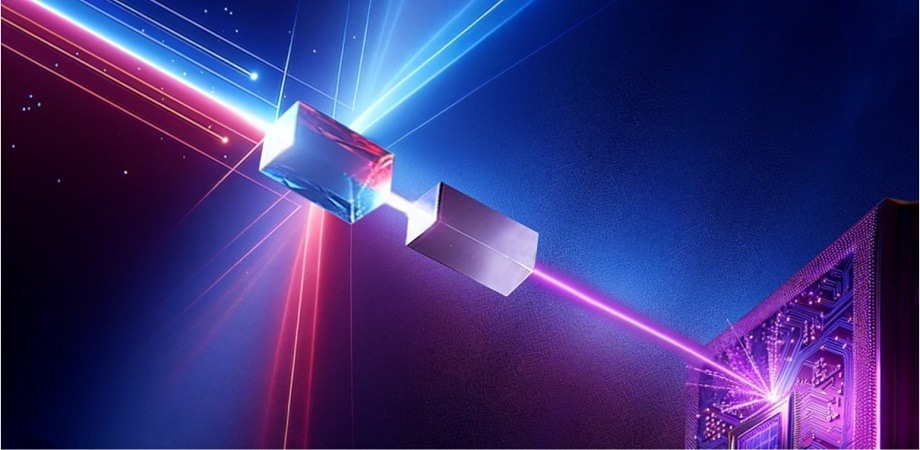Reviewed by Lexie CornerApr 2 2024
In science and technology, utilizing coherent light sources in the deep ultraviolet (DUV) region is highly significant for numerous applications, including lithography, defect inspection, metrology, and spectroscopy. Historically, high-power 193-nanometer (nm) lasers have played a crucial role in lithography, being essential components in systems for accurate patterning.
 193-nm DUV laser generated by cascaded LBO crystals. Image Credit: H. Xuan (GBA branch of Aerospace Information Research Institute, Chinese Academy of Sciences)
193-nm DUV laser generated by cascaded LBO crystals. Image Credit: H. Xuan (GBA branch of Aerospace Information Research Institute, Chinese Academy of Sciences)
The coherence constraints of traditional ArF excimer lasers impede their efficiency in tasks demanding high-resolution patterns, such as interference lithography.
This introduces the idea of the “hybrid ArF excimer laser.” By replacing the ArF oscillator with a small linewidth solid-state 193-nm laser seed, higher coherence and narrow linewidth are achieved. This improves interference lithography performance in high-throughput applications, increasing lithography speed and improving pattern precision.
The increased photon intensity and coherence of the hybrid ArF excimer laser allows for the direct processing of a wide range of materials, including solids and carbon compounds, with no heat effect. Its adaptability highlights its potential in various industries, including laser machining and lithography.
To maximize seeding for an ArF amplifier, the 193 nm seed laser's linewidth needs to be carefully regulated, ideally keeping it below 4 GHz. This specification sets the coherence length essential for interference, a requirement that solid-state laser technologies easily satisfy.
Researchers from the Chinese Academy of Sciences have made a discovery that propels this forward. They used an advanced two-stage sum-frequency generating approach that used LBO crystals to develop an impressive 60 mW solid-state DUV laser at 193 nm with a small linewidth, as described in Advanced Photonics Nexus.
Pump lasers at 258 nm and 1553 nm, produced from Yb-hybrid and Er-doped fiber lasers, respectively, are used in the process. This configuration yields an excellent 2 mm × 2 mm × 30 mm Yb:YAG bulk crystal for power scaling.
The produced DUV laser, together with its 221 nm counterpart, has a linewidth of roughly 640 MHz, an average power of 60 mW, a pulse duration of 4.6 nanoseconds, and a repetition rate of 6 kHz. This is noteworthy because it is the highest power output and narrowest linewidth recorded for 193 nm lasers produced by an LBO crystal.
The exceptional conversion efficiency of 27 % for 221 nm to 193 nm and 3 % for 258 nm to 193 nm, which sets new standards for efficiency levels, is especially noteworthy. This research opens up new possibilities for investigating different DUV laser wavelengths by highlighting the enormous potential of LBO crystals in producing DUV lasers at power levels ranging from hundreds of milliwatts to watts.
The viability of pumping LBO with solid-state lasers for reliable and effective generation of narrow-linewidth laser at 193 nm, and opens a new way to fabricate a cost-effective, high-power DUV laser system using LBO.
Hongwen Xuan, Professor and Study Corresponding Author, Aerospace Information Research Institute
These developments not only stretch the limits of DUV laser technology, but they also have the potential to transform a wide range of scientific and industrial fields completely.
Journal Reference:
Zhang, Z., et al. (2024) High-power, narrow linewidth solid-state deep ultraviolet laser generation at 193 nm by frequency mixing in LBO crystals. Advanced Photonics. doi.org/10.1117/1.APN.3.2.026012